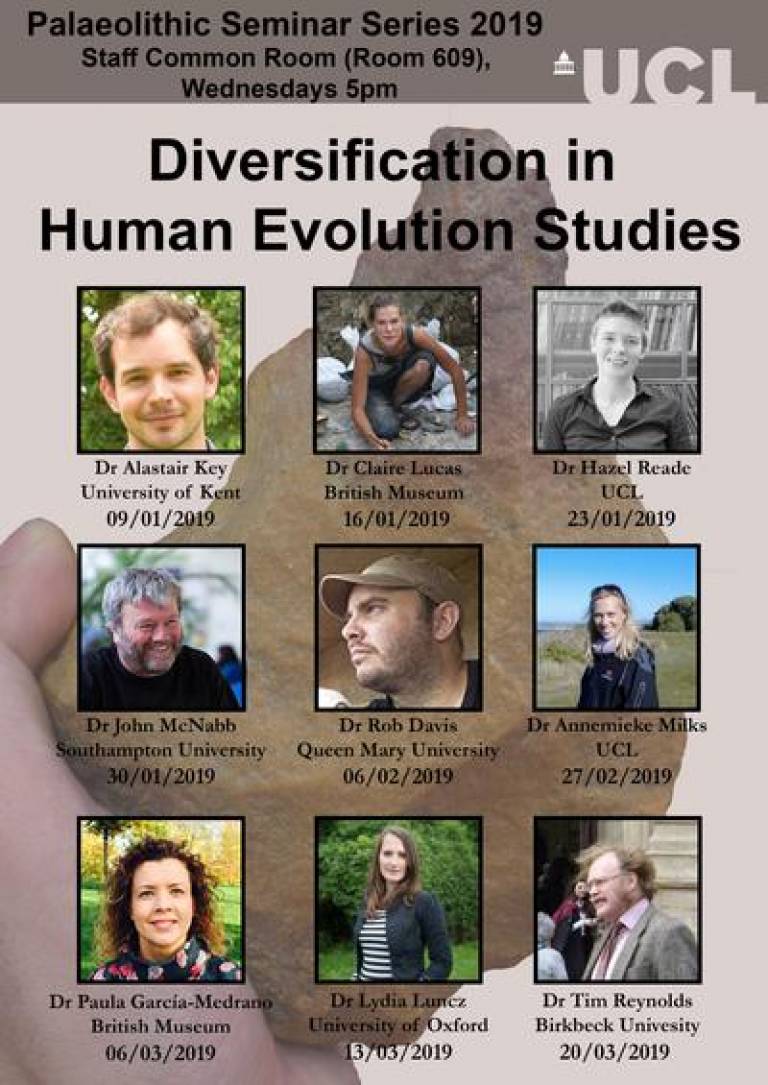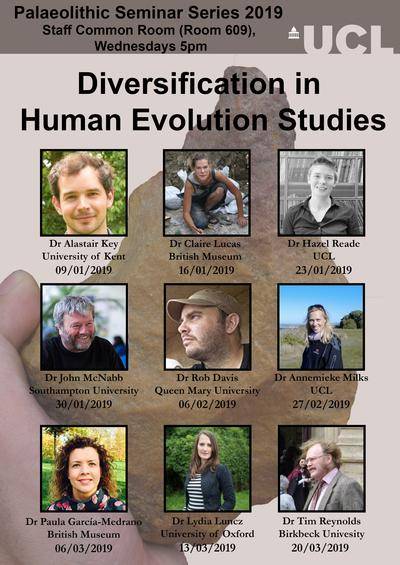Three million years of stone tool design and use: what can functional experiments tell us about early human behaviour?
09 January 2019, 5:00 pm–6:00 pm

Event Information
Open to
- All
Location
-
Room 609, UCL Institute of Archaeology
Alastair Key (University of Kent) will give the first seminar in the new series on Diversification in Human Evolution Studies at the UCL Institute of Archaeology on 9 January.
Abstract
Palaeolithic stone tools were made for over three million years, across six continents, and by at least 12 different hominin (fossil and modern human) species. They were essential to the survival of these species and constitute the most abundant and well documented evidence we have concerning the behaviour, culture and evolution of early humans. Despite their ubiquitous importance, a single principle underpinned the production of almost every stone tool: the capacity to cut. Indeed, every stone tool artefact ever recovered from the archaeological record was most likely produced so that another material could be cut, pierced, scraped or otherwise deformed. It is, therefore, reasonable to hypothesise that hominins produced and designed stone tools according to principles that maximised their functional capabilities.
Over the past five years a series of hypothesis driven experiments, undertaken from ergonomic and mechanical engineering perspectives, have started to address the issue of functional design-theory in Palaeolithic artefacts. This talk will discuss the techniques applied during these studies and their implications for understanding early human behaviour. Key questions will include whether or not hominins intentionally designed stone tools to be functionally optimised, whether other influences such as cultural variation significantly impacted on artefact forms, and how the evolutionary trajectory of the hominin upper limb may have limited stone tool design criteria. Stone tool artefacts from across the Lower Palaeolithic will be assessed in parallel to the experimental data, providing examples of how our early ancestors actually behaved.
Any enquiries about the event may be directed to Tomos Proffitt.
 Close
Close


